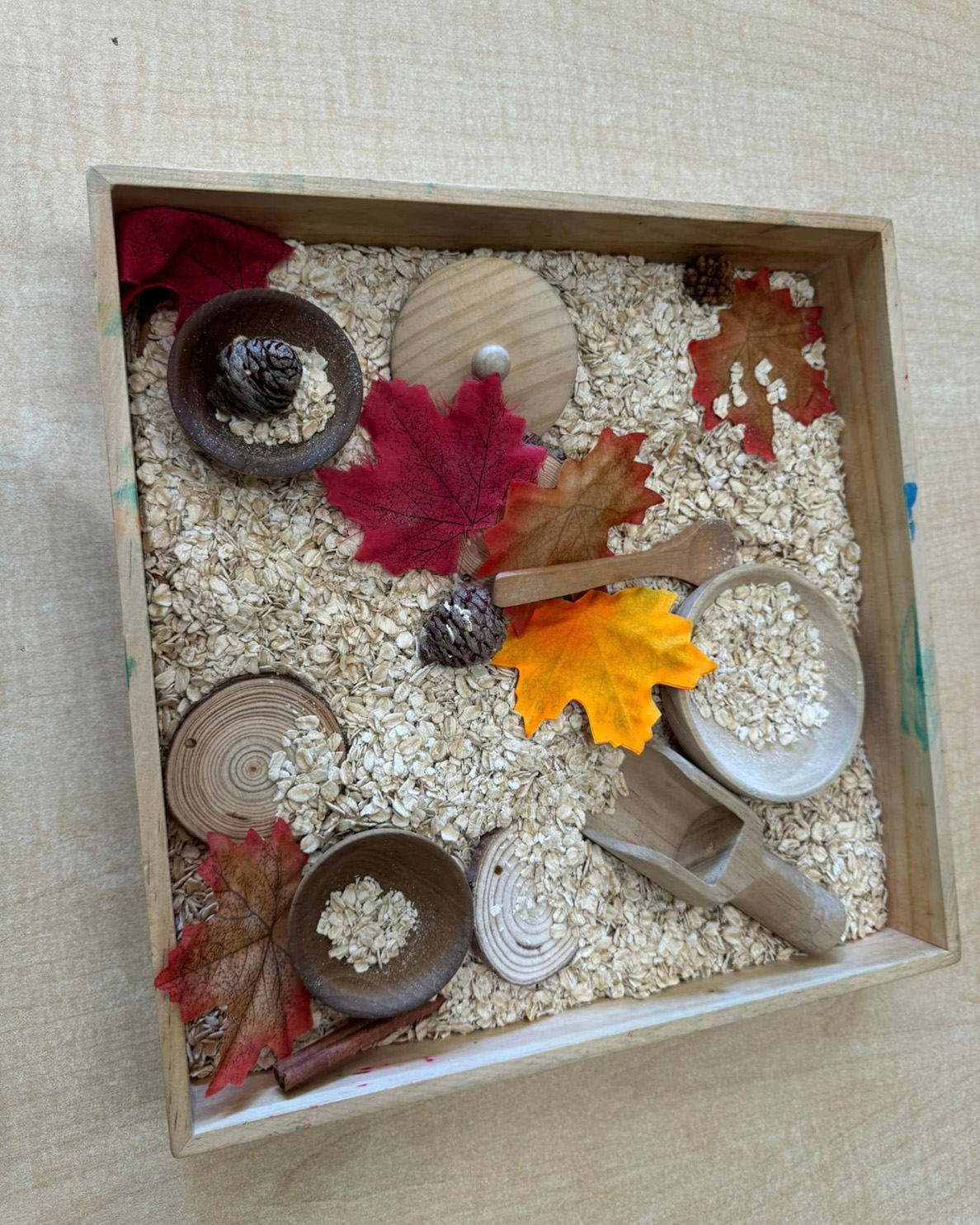How Infants Learn Through Their Senses
For infants, the world is understood first through touch, sight, sound, and movement. Before they can speak or crawl, their fingers explore, their eyes track, and their ears tune into every new detail. Montessori classrooms for infants embrace this natural way of learning by preparing environments where sensory exploration is safe, purposeful, and soothing.
One way teachers nurture this natural way of learning is through Montessori sensory bins for infants. Infant sensory bins focus on large, safe objects that invite grasping, mouthing, and handling. The goal is to provide materials that match an infant’s developmental stage, giving them freedom to explore with their senses.
What Makes a Montessori Infant Sensory Bin Different
Sensory bins are popular across early education, but Montessori sensory bins for infants are carefully curated. They are:
- Safe: Items are large enough to avoid choking hazards and free of artificial noise or flashing lights.
- Natural: Materials are often made of wood, cloth, or natural objects rather than plastic toys.
- Simple: Fewer items are presented at once, reducing overstimulation and encouraging focus.
The result is a calm, engaging activity that supports an infant’s concentration and natural curiosity.
Seasonal Sensory Bin Ideas for Infants
Autumn offers a wealth of textures, colors, and shapes that are perfect for infant sensory bins. Teachers might prepare bins with:
- Felt Leaves: Soft, oversized fabric leaves in red, orange, and yellow that infants can grasp and crinkle safely.
- Wooden Rings or Discs: Smooth to the touch, they encourage grasping and transferring from one hand to another.
- Cloth Pumpkins: Lightweight and squeezable, these objects add a seasonal theme while remaining soft and safe.
- Scarves in Fall Colors: Babies love pulling scarves through their fingers or watching them flutter when tossed gently into the air.
Each item is chosen carefully to give infants real experiences with texture, weight, and shape.
Building Motor Skills Through Exploration
Every action an infant takes in a sensory bin builds foundational skills:
- Grasping: Picking up a felt leaf strengthens hand muscles.
- Transferring: Moving a wooden ring from one hand to the other builds coordination.
- Mouthing: Safely mouthing large, soft objects allows infants to explore through taste and texture, a natural developmental stage.
- Reaching and Rolling: Stretching for an object or rolling toward a bin supports gross motor development.
These small movements are stepping stones toward independence.
Calming Engagement in the Classroom
Sensory bins for infants are quiet, focused moments where babies are free to explore at their own pace.
Teachers often present bins during floor time, sitting close by to observe. Some infants reach eagerly. Others study the objects before slowly extending a hand. Teachers follow the child’s lead, never rushing or forcing interaction.
This patient observation is a cornerstone of the Montessori curriculum. The goal is to honor the infant’s natural rhythm of curiosity.
Why Montessori Sensory Exploration Feels Different
Many infant toys rely on flashing lights, synthetic sounds, or multiple functions to grab attention. Montessori sensory bins take the opposite approach: fewer items, real textures, and natural beauty.
Infants learn that a pinecone feels rough, a scarf feels soft, and a wooden ring feels smooth. These truths about the world stay with them far longer than the sounds of a battery-powered toy.
By trusting infants with real materials, Montessori classrooms communicate respect for their capabilities, even in the earliest months of life.
Seeing the Season Through Infant Hands
When you watch an infant explore a sensory bin, you realize how deeply they are learning. A felt leaf becomes an entire study of texture. A wooden ring becomes a challenge in coordination. A scarf floating through the air becomes a moment of wonder.
In Montessori infant classrooms, these moments are respected as real, valuable work.
Bringing Sensory Exploration Gently to a Close
Calm, simple materials help infants explore texture, weight, and movement at a pace that feels natural. Seasonal sensory bins turn floor time into quiet discovery, supporting early motor skills while protecting focus and comfort.
See how infant sensory exploration is presented with safety, simplicity, and care in a prepared environment. Schedule a tour and find a Montessori Kids Universe location near you.


